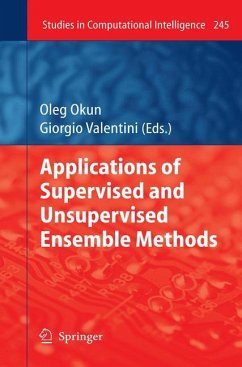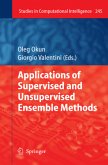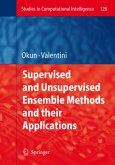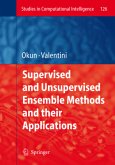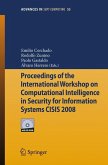Expanding upon presentations at last year's SUEMA (Supervised and Unsupervised Ensemble Methods and Applications) meeting, this volume explores recent developments in the field. Useful examples act as a guide for practitioners in computational intelligence.
This book contains the extended papers presented at the 2nd Workshop on Supervised and Unsupervised Ensemble Methods and their Applications (SUEMA) held on 21-22 July, 2008 in Patras, Greece, in conjunction with the 18th European Conference on Artificial Intelligence (ECAI'2008). This workshop was a successor of the smaller event held in 2007 in conjunction with 3rd Iberian Conference on Pattern Recognition and Image Analysis, Girona, Spain. The success of that event as well as the publication of workshop papers in the edited book "Supervised and Unsupervised Ensemble Methods and their Applications", published by Springer-Verlag in Studies in Computational Intelligence Series in volume 126, encouraged us to continue a good tradition.
The purpose of this book is to support practitioners in various branches of science and technology to adopt the ensemble approach for their daily research work. We hope that fourteen chapters composing the book will be a good guide in the sea of numerous opportunities for ensemble methods.
Hinweis: Dieser Artikel kann nur an eine deutsche Lieferadresse ausgeliefert werden.
This book contains the extended papers presented at the 2nd Workshop on Supervised and Unsupervised Ensemble Methods and their Applications (SUEMA) held on 21-22 July, 2008 in Patras, Greece, in conjunction with the 18th European Conference on Artificial Intelligence (ECAI'2008). This workshop was a successor of the smaller event held in 2007 in conjunction with 3rd Iberian Conference on Pattern Recognition and Image Analysis, Girona, Spain. The success of that event as well as the publication of workshop papers in the edited book "Supervised and Unsupervised Ensemble Methods and their Applications", published by Springer-Verlag in Studies in Computational Intelligence Series in volume 126, encouraged us to continue a good tradition.
The purpose of this book is to support practitioners in various branches of science and technology to adopt the ensemble approach for their daily research work. We hope that fourteen chapters composing the book will be a good guide in the sea of numerous opportunities for ensemble methods.
Hinweis: Dieser Artikel kann nur an eine deutsche Lieferadresse ausgeliefert werden.

